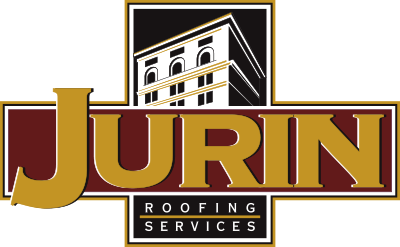Welcome to another installment of our D.I.Y.R. series! This week we’ll show you how to make proper repairs to your rubber roof system.
So you’re probably wondering what’s with the R? We all know what D.I.Y. is but do you D.I.Y.R.? There’s doing it yourself and then there’s doing it yourself the RIGHT way! We all like to do a little D.I.Y. when possible, if not only to save some cash and time but just for the pride of doing it yourself! However if you D.I.Y. wrong you could end up just paying more in the long run.
Check out our step-by-step EPDM rubber roof repair slideshow below. For more detailed information there is a full text description below the slideshow. Happy repairing!
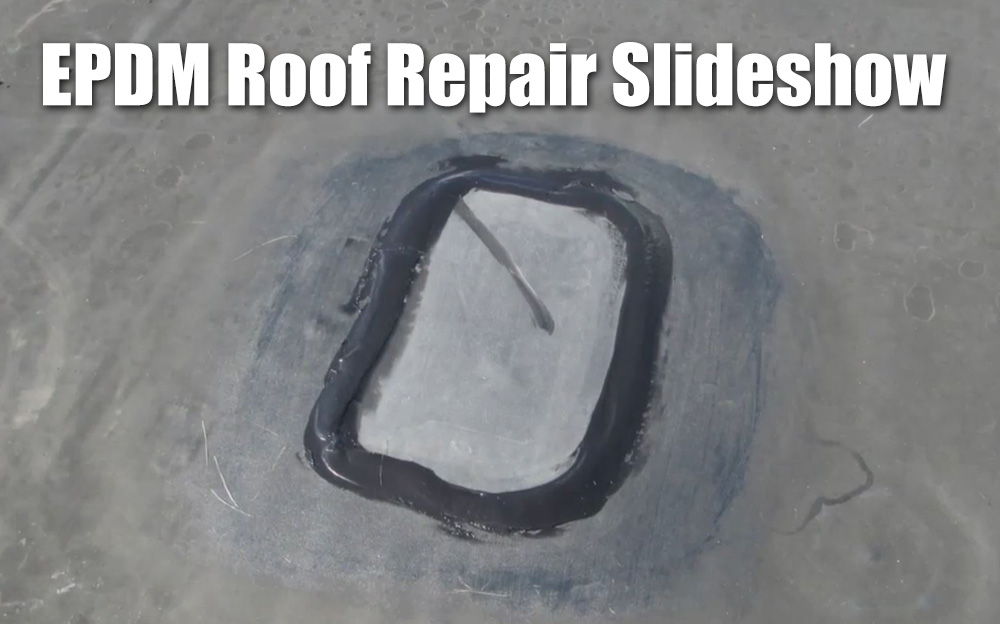
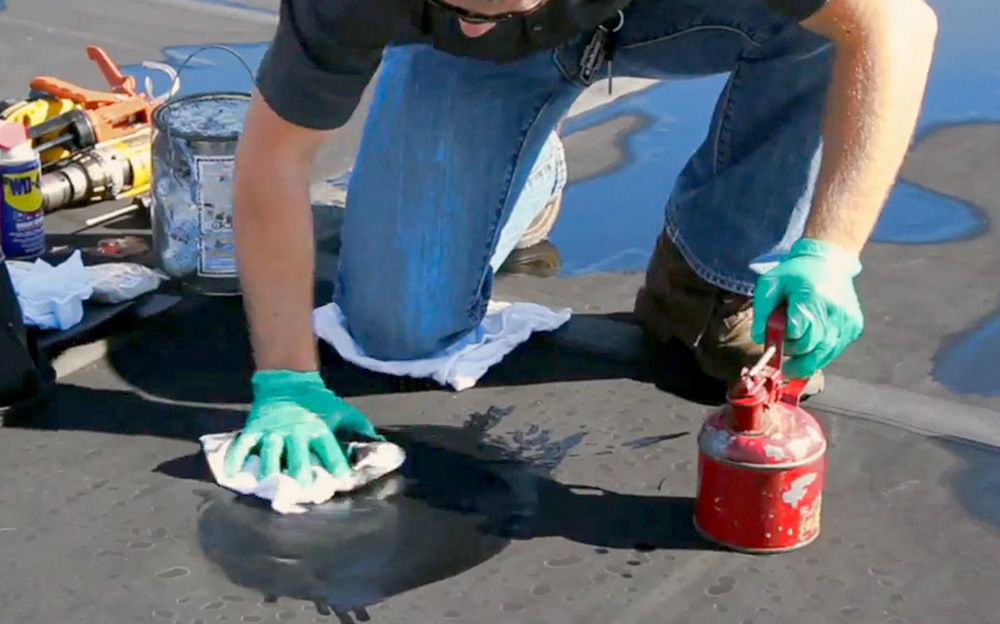
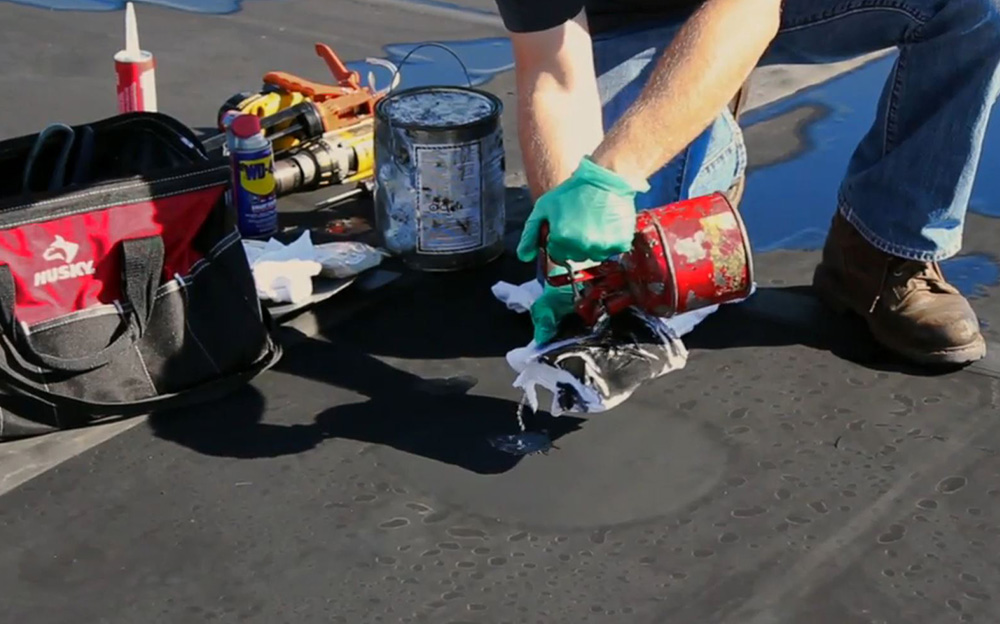
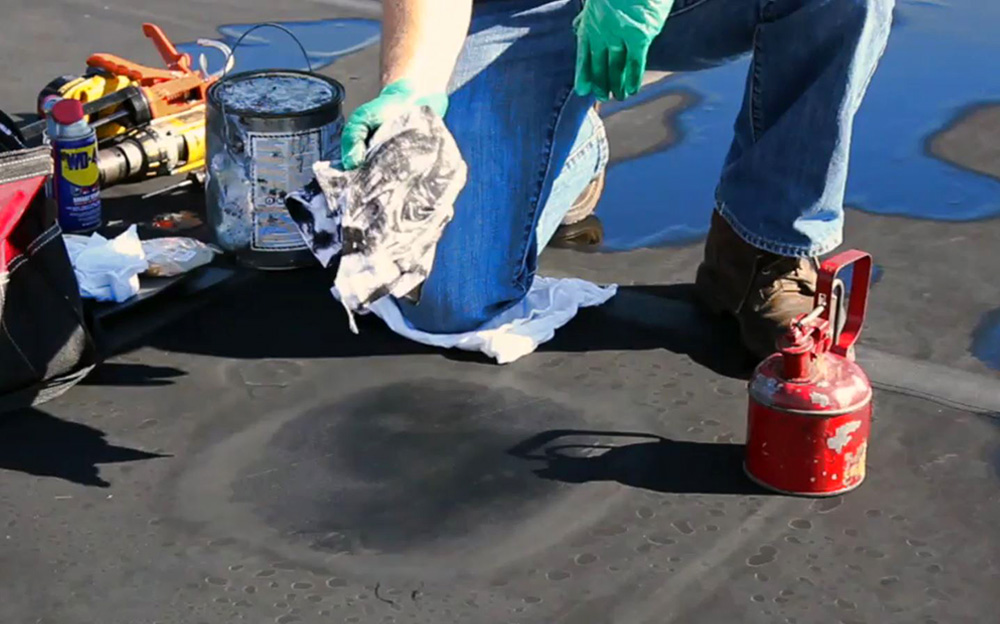
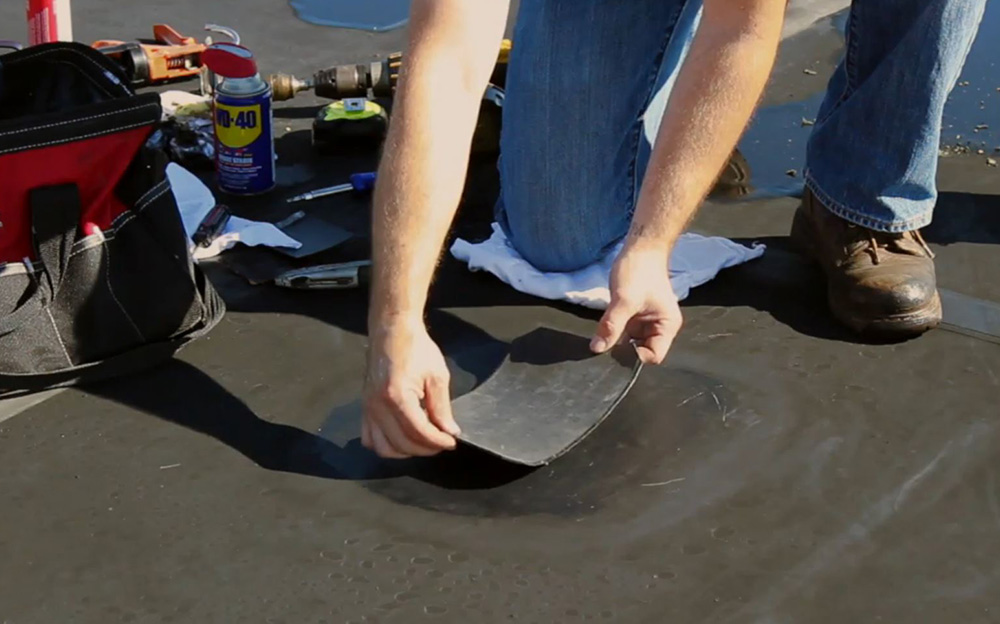
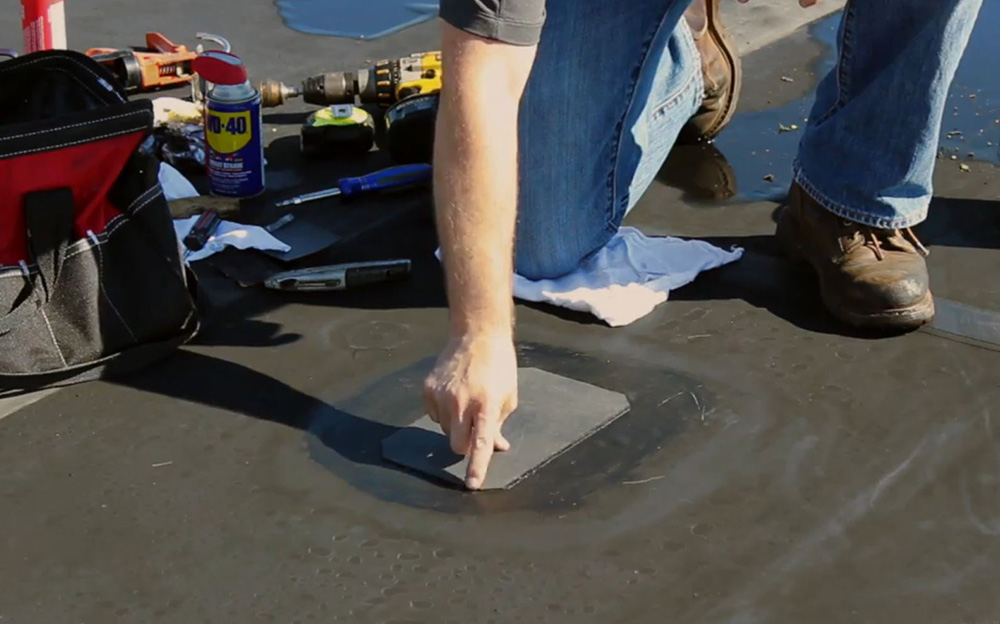
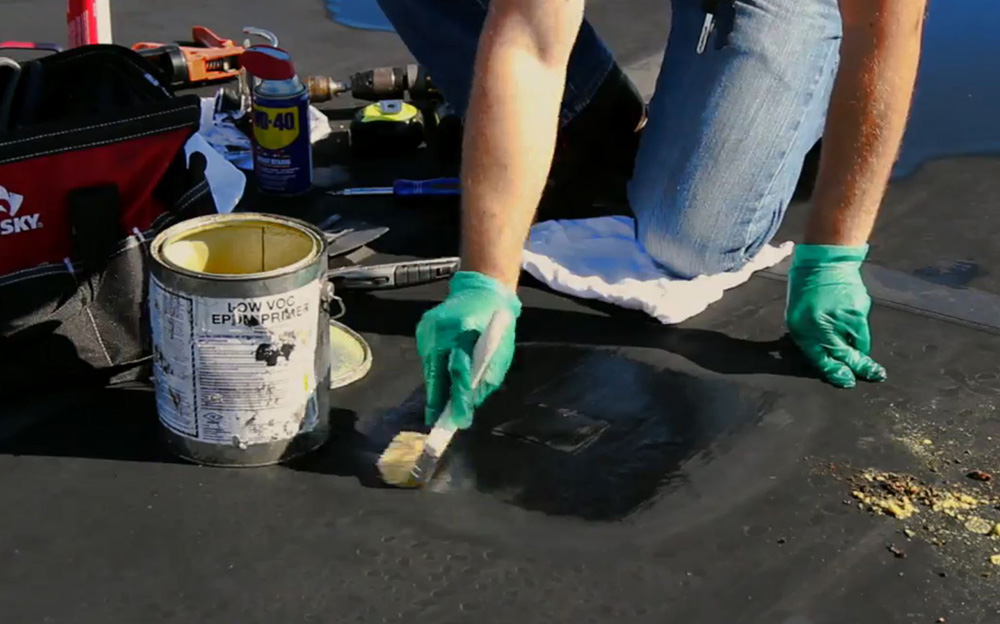
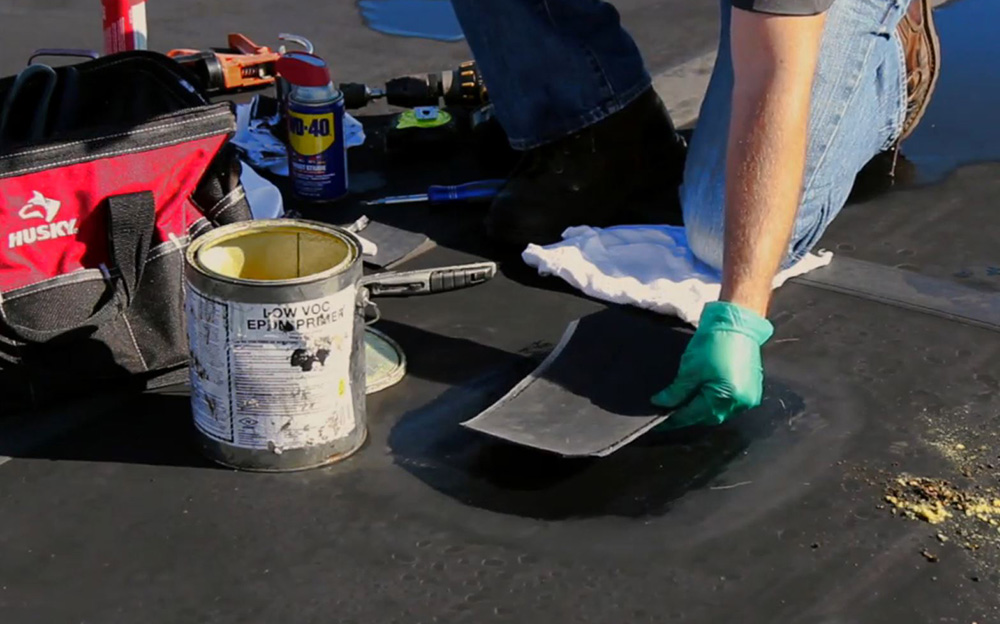
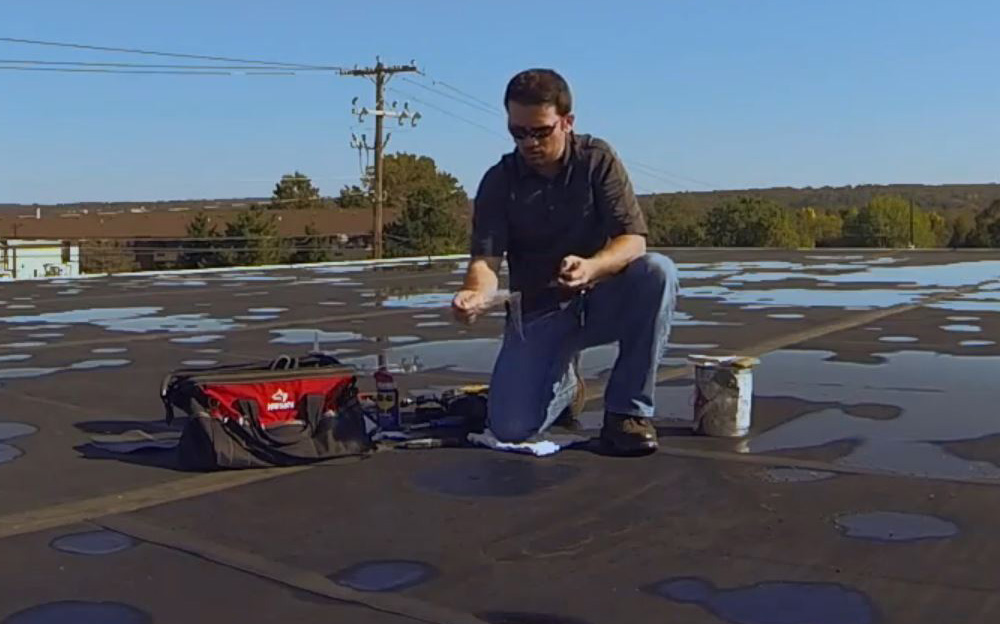
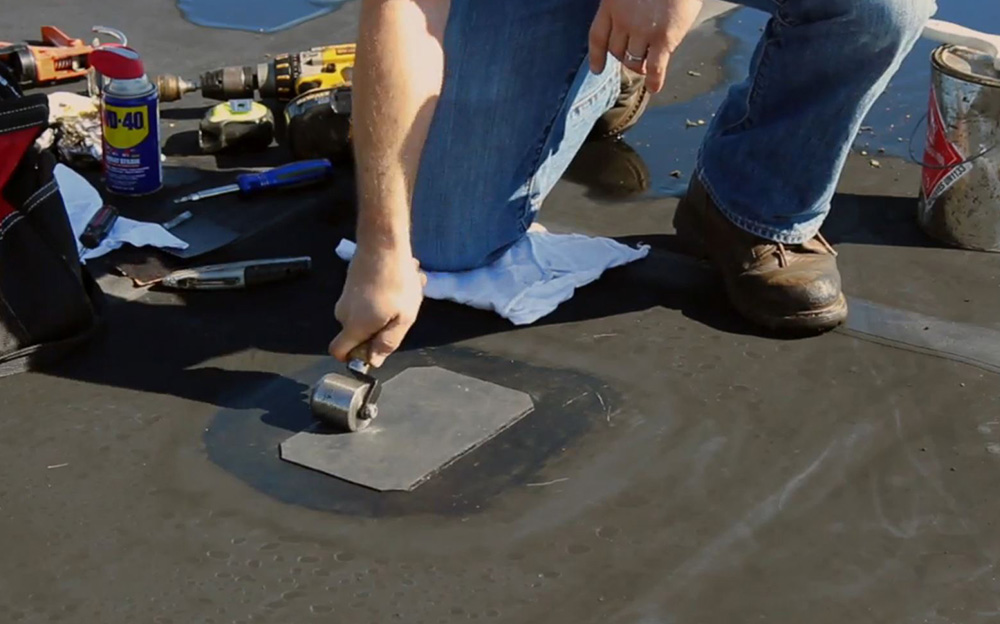
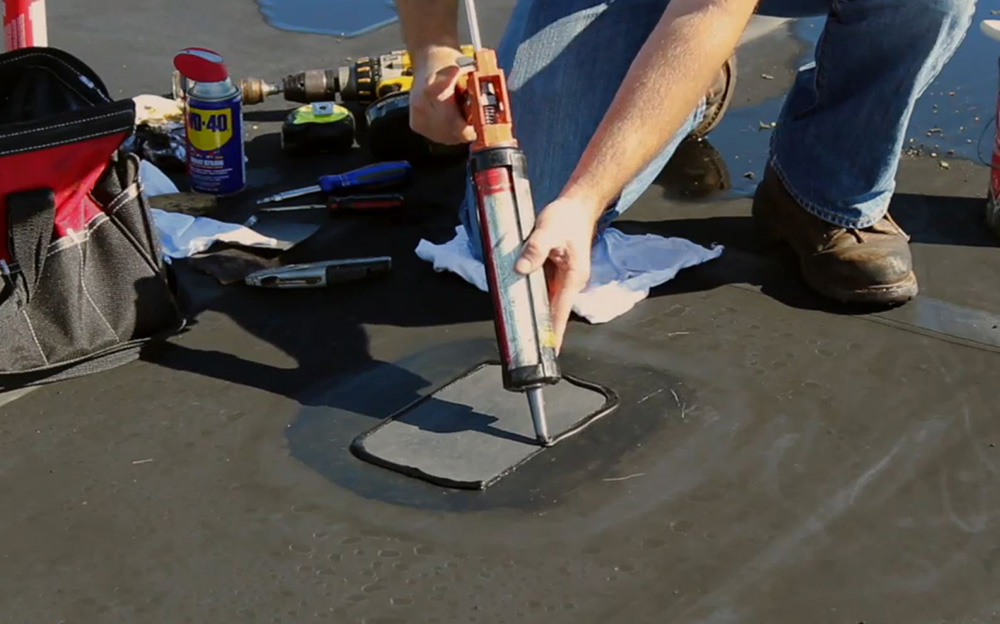
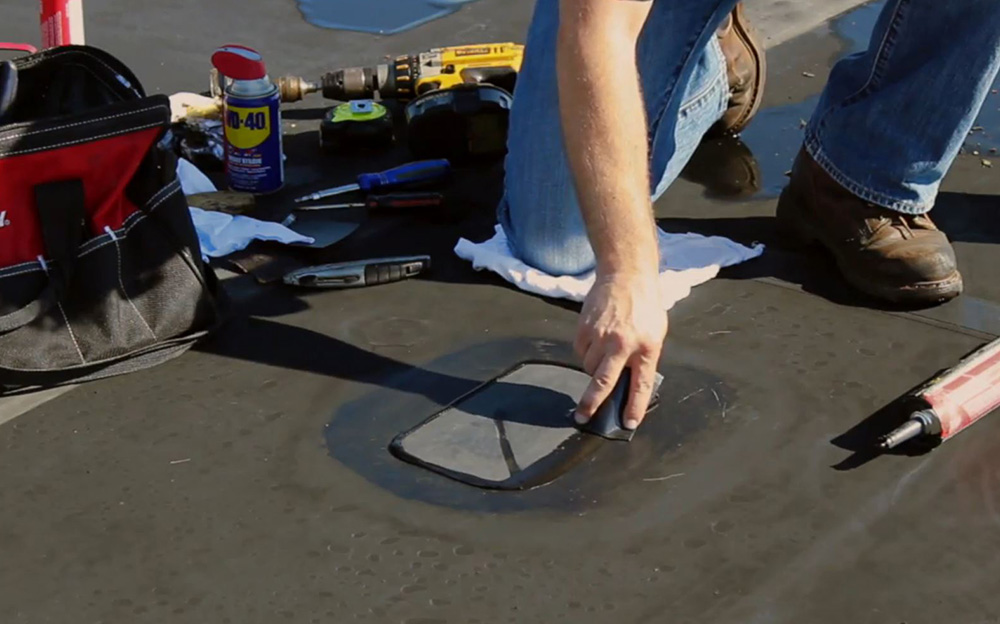
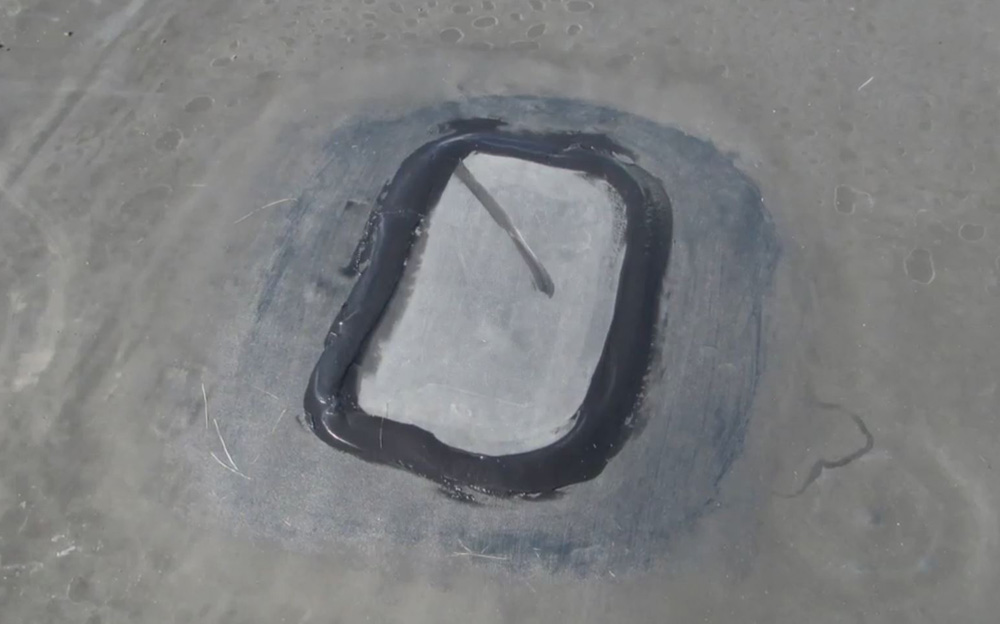
How Do I Repair and Patch My Rubber Roof?
EPDM roof systems, which are sometimes referred to as rubber roofs, are a very common choice for low sloped roofing installations. They are expected to have an extended service life with a life expectancy of 15 to 20 years for most designs and applications.
They are safer to install when compared to modified roof systems that require the use of an open flame torch or hot asphalt to adhere the roof system. In addition, they are easy to maintain and repair in the event that a leak occurs or the roof surface is damaged.
Two of the most important aspects of rubber roof repair and maintaining an EPDM roof system are the selection of the correct repair materials and the proper preparation of the area to be repaired. Using improper materials or methods to complete a rubber roof repair and maintain your EPDM roof system can lead to damages to the roof membrane as well as a reduced life expectancy, premature failure of the roof system. Use of improper repair materials may also void your manufacturer’s warranty.


What Products Can’t Be Used On My Rubber Roof?
When choosing your materials to complete the rubber roof repair to your EPDM roof system it may be easiest to explain the type of materials that you should not use. EPDM roofing membrane is a synthetic rubber membrane. EPDM, or rubber, is not compatible with asphalt based products. This includes any type of roof cement flashing as well as any type of asphalt based roof coating including aluminum roof coating. These types of products should not be used to maintain or repair an EPDM roof membrane system.
If asphalt products are used for repair or maintenance on EPDM roof systems, the contaminated membrane will be required to be cut out and replaced. If the extent of the contamination is widespread, this may require the roof system to be replaced. Once the roof membrane is contaminated, the removal of the contamination is difficult and the replacement of the membrane becomes necessary.

Wondering where you can purchase proper repair materials?
Unfortunately there’s a good chance your local hardware store isn’t going to carry these products. Here are some resources where you can purchase manufacturer specific repair materials:
ABC Supply
Suncoast Roofers Supply
CRS Supply
Roofing Supply Group
A Word About Safety
The most important aspect of making your own rubber roof repair is to complete the repair safely. If you are in doubt about your ability to safely complete the repair, please contact a roofing professional to complete the repair work for you.
The first step in making a rubber roof repair is to setup your ladder and surrounding area to create a safe work zone. Set your ladder up so that it maintains a 4:1 ratio in the angle of the ladder. Make sure that the ladder has firm footing and if necessary have someone foot the base of the ladder to prevent it from slipping out.
In addition, if you are using an aluminum ladder make sure that you are not setting up the ladder near any power lines. Finally make sure that the ladder is tied off and that the ladder extends a minimum of 3 feet above the roof edge.
We also recommend wearing a safety harness and non-slip work boots.

Step-by-Step EPDM Roof Repair
Roof Repair Patch Preparation
The first step in repairing your EPDM roof system is to properly prepare the roof surface to receive the patch. EPDM has carbon contained within the membrane.
As the membrane ages the sheet begins to develop a carbon film on the surface of the sheet. This is evidenced by rubbing your hand across the sheet. If it is black EPDM, you will have carbon black on the surface of your hand. This carbon black film as well as dirt and other oxidation must be cleaned from the surface of the sheet to allow the patch to stick to the surface of the roof membrane.
In order to clean the surface of the roof use a cleaner that does not leave a residue on the membrane after the area dries. Many manufacturers recommend a cleaner such as Simple Green or Spic n’ Span. You can also purchase weathered membrane cleaner from your local supplier (see above links on where to purchase). Wash the area of the roof where the patch is to be applied to a size greater than the size of the patch to be applied. Use cloth rags to scrub the surface of the membrane to remove the oxidation from the surface of the EPDM. After the oxidation has been removed, wipe the surface of the area down to remove all traces of moisture from the patch area.
It is important that the dirt, oxidation and carbon black are removed from the surface of the roof. If they are allowed to remain, any new patch or adhesive used for the patch will stick to the film on the roof surface and not to the membrane causing the patch to be compromised. Cleaning the roof surface properly will allow the patch to adhere directly to the membrane, improving its long-term performance.

Sizing and Cutting of the Roof Repair Patch
It is best to measure the roof repair patch prior to applying the primer. In order to measure the patch, take the material and lay it over the area to be patched. Allow the patch material to extend past the area where the repair is required. It is best to have a minimum of two inches in all directions from the leading edge of the cause of the roof problem being repaired.
Once you have laid out the patch, cut the roof repair material to fit. It is recommended to clip or round the corners of the patch to avoid any sharp corners that can be caught and lifted by foot traffic on the roof surface.

Priming the Roof Repair Area
The next step in applying the patch after properly cleaning the roof surface is to apply a thin coat of primer to the membrane surface. When applying the primer use a paint roller with a medium nap roller or paint brush to apply a thin coat of primer to the area where the patch is to be applied.
When applying the primer, ensure that it extends past all edges of where the patch is to be applied. This will ensure that all leading edges of the EPDM patch are properly adhered to the roof membrane.

Install Roof Repair Patch
Rubber roof repair materials are sold in either standard membrane materials (which require separate adhesive) or pressure sensitive materials which have the adhesive pre-applied to the underside of the membrane.
Pressure Sensitive Roof Repair Patch
If you are using a pressure sensitive roof repair material, remove the paper or film backing from the patch and apply the patch to the surface of the roof system. Press the patch firmly in place.
It is best to use a steel roller to apply the patch to the surface of the roof. The steel roller applies even pressure over the roof patch as it is passed back and forth across the patch and it allows you to press any trapped air out from under the repair patch.
It is recommended that you apply a bead of EPDM lap sealant around the leading edge of the patch to provide additional protection against water infiltration. Once applied, lap sealant should be feathered to ensure proper adhesion.
Non-Pressure Sensitive Roof Repair Patch
If you are using a repair material that does not have a pressure sensitive backing you will be required to use a single-ply EPDM adhesive to adhere the patch to the roof surface. The adhesive must be for sealing EPDM to EPDM and not bonding adhesive (also known as yellow glue) which is used for sealing EPDM to substrates or insulation board.
Apply the adhesive to the underside of the membrane patch and the surface of the area to be patched. Allow the adhesive to flash off until it is no longer tacky to the touch. After the glue has flashed off you will carefully mate the patch material to the surface of the roof.
Once applied, use the steel roller to roll the entire patch to make certain that it has properly mated to the existing EPDM roof membrane. It is recommended that you apply a bead of EPDM lap sealant around the leading edge of the patch to provide additional protection against water infiltration.

Congratulations!
You just completed your EPDM rubber roof repair properly yourself. Give yourself a big pat on the back!
